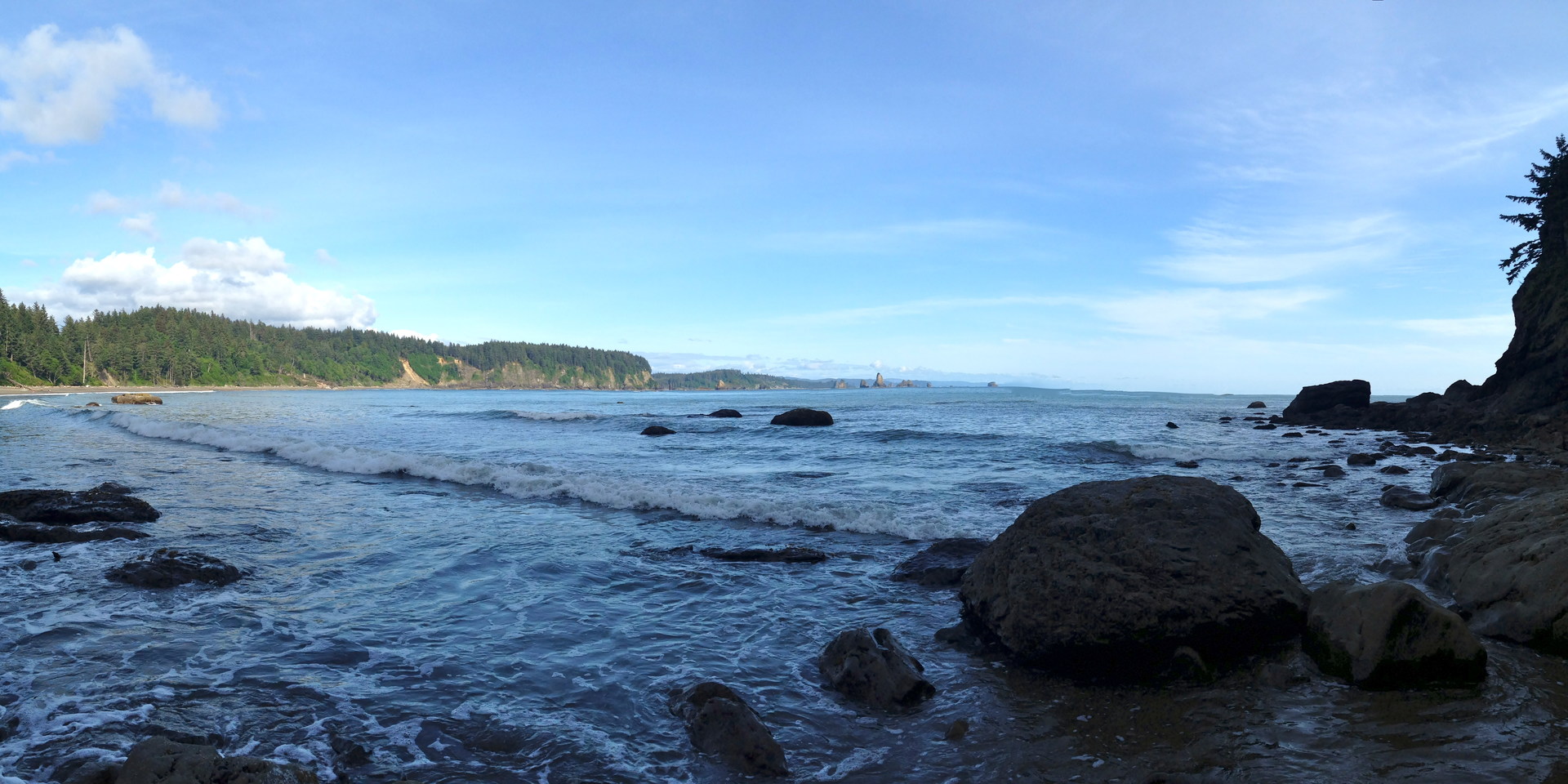You are here
Third Beach is a terrific destination for a day outing, a short backpacking trip, or a beginning point for extended trips southward to more secluded areas of the Olympic National Park. Additionally, it is perhaps one of the most easily accessible ways to experience this region's coastal wilderness. The trail to Third Beach is well maintained and relatively flat except for the section adjacent to the beach where the bluff drops steeply to sea level. The majority of the trail passes through a second-growth, high-canopy forest. Wildflowers dot the floor in the spring, and mushrooms become prevalent in the fall. As with nearly all coastal trails in this region, you will hear the ocean before it finally comes into view, which adds to the anticipation.
The beach itself is a roughly 1-mile stretch of fine sand that is terrific for swimming and beach lounging. Teawhit Head sits to the northwest and Taylor Point sits to the southeast; while the beach primarily runs east to west, these headlands are frequently referred to as the north and south boundaries, respectively. Upon arriving at the beach, rising sea stacks and the impassable Teawhit Head will greet you on the right. To the left, the beautiful sand beach will stretch to the southeast, terminating at Taylor Point with a cluster of large sea stacks known as Giants' Graveyard visible just beyond. Directly in front of you will be the mesmerizing waves of Strawberry Bay and the seemingly infinite waters of the Pacific. A waterfall is located near the southeast end of the beach near Taylor Point, and this makes for an easy day hike destination. An overland trail provides access to the Scott Creek, Strawberry Point, Toleak Point, and areas south of Taylor Point. Third Beach tends to be a bit less congested than its neighbor to the north, Second Beach, likely owing to the longer hike and the less impressive sea stacks and tide pools.
There are a few inland campsites that can be found along Third Beach, but most camping is right on the sand. Some driftwood shelters and campfire rings exist, but camping is really left to individual discretion. Know the tide conditions before you select your site! Sunsets at Third Beach are certainly not dull, but depending on the time of year and your location on the beach, the setting sun can be obscured by Teawhit Head. A few tide pools are located near Teawhit Head, where anemones and starfish can be found. The beach offers opportunities for wildlife and plant viewing, as well. Bald eagles and seals are frequent visitors to the areas. Whale migratory patterns can also provide seasonal wildlife experiences.
It is difficult to imagine, but this relatively-pristine area of coastal wilderness was the site of the La Push Oil Well over a century ago. The original trail was the access road for the well. Evidence of the long-abandoned project can reportedly be found in the area, but with the magnificent scenery all-around, it may be difficult to find the motivation to do so.
Note that as of May 2013, all food, garbage, and scented items must be stored, overnight and when unattended, in park-approved bear canisters along the entire Olympic National Park Coast. Buckets or other hard-sided containers are no longer permitted.
Wilderness Camping Permits are required for overnight camping at Third Beach and elsewhere on the Olympic Coast. And be sure to review tide and weather conditions prior to your visit.
Logistics + Planning
Current Weather: Powered by Dark Sky






























Comments
Sign In and share them.